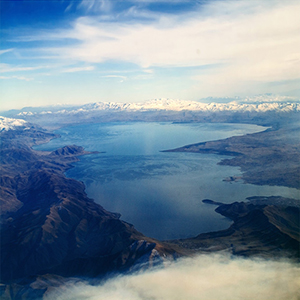Lake-wide assessment of trace elements in surface sediments and water of Lake Sevan

All claims expressed in this article are solely those of the authors and do not necessarily represent those of their affiliated organizations, or those of the publisher, the editors and the reviewers. Any product that may be evaluated in this article or claim that may be made by its manufacturer is not guaranteed or endorsed by the publisher.
Accepted: 17 April 2023
Authors
Lake Sevan (Armenia) is one of the large freshwater high-mountain lakes of Eurasia. Detailed information about the extent and fate of trace elements on lake sediment and water quality has not been published yet. For this reason, surface sediment and water samples were collected from the southern and northern basins of Lake Sevan to determine trace element concentrations and assess the trace element behaviour. Geo-accumulation index, potential ecological risk index, and hazard index were calculated to estimate the environmental risk potential. In comparison to reference values, the investigated sediment samples contained elevated concentrations frequently for V, Cr, Co, Ni, Mo, Cd, Be, Ti, Rb, Sr, Se, Hf, and Th and occasionally for Cu, As, Li, B, Ag, Sb, Tl, Bi, U, La, Ce, Pr, Nd, Sm, Eu, Gd, Tb, Dy, Ho, Er, and Tm. An overall potential ecological risk posed by all the investigated trace elements in the sediments was assessed to be moderate-considerable, however, Mo, Hg, and Cd were the elements with the highest ecological risk potential. The two basins of the lake showed significantly different behaviour according to the investigated trace element contents in the sediments to be higher in the bigger basin compared to the smaller basin. In comparison to reference concentrations in water samples according to the use of the adapted geo-accumulation index, elevated values for Ti, Cr, Cu, Cd, and Pb were observed. Elevated concentration was also observed in the case of B in nearly all water samples in comparison with literature values. Nevertheless, several water samples can be seen as not strongly anthropogenic influenced by Co, Ni, Sn, Sb, Ag, Hg, and Bi. The concentrations of trace elements in the lake water caused health risks to humans particularly children in the case of lake water used for drinking purposes, moreover, As was the main element posing health hazards. The results point out further attention to the sources of elevated trace elements in Lake Sevan, including anthropogenic influences and geological characteristics.
Supporting Agencies
German Academic Exchange Service (DAAD), Science Committee of MESCS RA, German Federal Ministry of Education and ResearchHow to Cite

This work is licensed under a Creative Commons Attribution-NonCommercial 4.0 International License.






